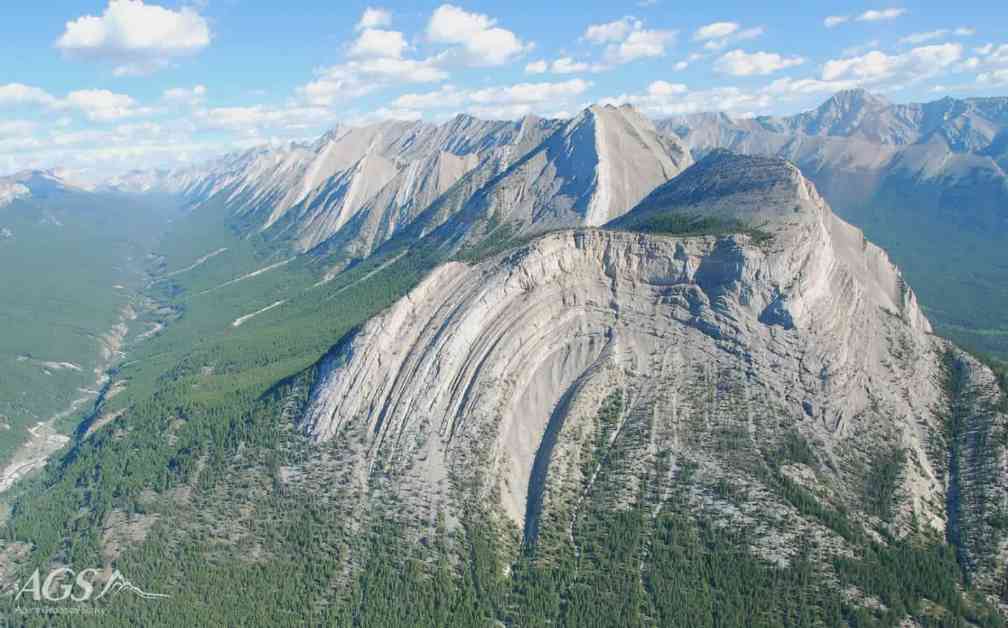Geological folds are fascinating formations that provide insights into the Earth’s history. These bends in layered rock are the result of tectonic forces such as compression, tension, and shear. The process of fold formation is complex and driven by the movement of tectonic plates, which can collide, move apart, or slide past each other, causing the Earth’s crust to deform.
Compression is the primary force behind most geological folds, as the immense pressure from tectonic plate movement causes rock layers to buckle and fold. This deformation can occur on both regional and local scales, leading to the formation of large mountain ranges like Mount Head in the Canadian Rockies.
Mount Head is a prime example of geological folding, showcasing a variety of fold types that provide a clear record of the tectonic forces that shaped the region. The mountain’s geological history dates back hundreds of millions of years, with layers of sedimentary rocks like limestone, shale, and sandstone deposited in ancient seas. These layers were later buried, compacted, and subjected to tectonic forces during the Laramide Orogeny, a period of mountain building between 80 and 55 million years ago.
The collision of the North American and Pacific plates during the Laramide Orogeny generated immense compressional forces that caused the sedimentary layers to buckle and fold, creating the intricate structures seen in Mount Head today. These folds not only provide a visual record of past tectonic activity but also offer valuable information about environmental changes over time.
Studying geological folds is essential for geologists to reconstruct the sequence of events that shaped a region. By analyzing the different types of folds, their orientation, and the characteristics of the rock layers involved, researchers can unravel the geological history of an area and gain a deeper understanding of the forces that have shaped the Earth’s surface.
In conclusion, Mount Head in Canada is a spectacular example of geological folding that offers a glimpse into the Earth’s dynamic past. The folds found in this mountain are a testament to the powerful tectonic forces that have shaped our planet over millions of years, making them a valuable source of information for geologists and researchers studying the Earth’s geological history.





